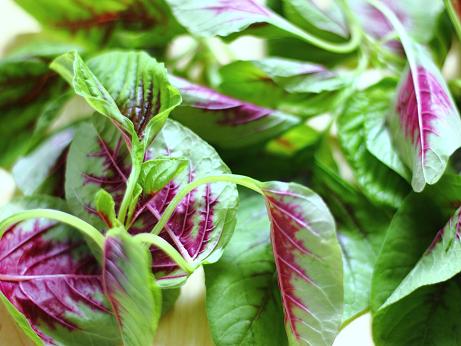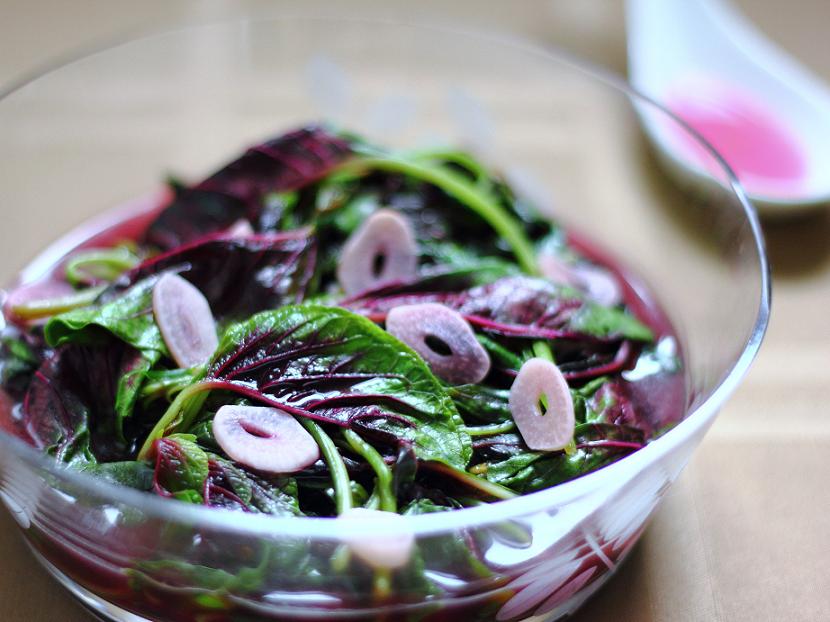Last Updated on June 26, 2021 by Simon Fan
Amaranth is known by many names, one of them being Chinese spinach.
It might be more appropriate to call it “Mexican grain,” given it was cultivated in Mexico as early as seven thousand years ago as a food crop, long before it was brought to China. Amaranth seeds were used as a great source of protein and were a principal part of the diet of the pre-Hispanic populations there.
Or perhaps “Indian spinach,” as it has been widely used across various regions in India and appears in many local dishes in the form of stir-fry, soup, dal or curry.
Amaranth is also consumed in Southeast Asia, Africa, and the Mediterranean region, especially Greece. When I visited Athens a few years ago, I had a very refreshing amaranth salad (called vlita), served with grilled fish. The green leaves were boiled and mixed with chopped onion, lemon juice, olive oil, and sprinkled with feta cheese on top. Simple, vibrant, and memorable!
Compared with spinach, amaranth is a more interesting vegetable in my opinion—it has a deeper and earthier flavor, and the leaves and stems retain their crisp-tender texture when cooked.

Amaranth is a beloved summer vegetable in China. Among the many varieties available there, the most popular ones are the green, purple, and multicolor varieties. In Chinese cuisine, amaranth (xiancai 苋菜) is used mainly in stir-fries and soups. You can stir-fry the leaves with bamboo shoots, chicken, ham, or simply with garlic. Soup recipes typically call for the green variety and use chicken stock to enhance the flavors. More elaborate recipes may include ingredients such as fish, dried scallops, or salted eggs.
I’m particularly fond of the multicolor variety, as its leaves turn the cooking liquid into a beautiful red-purple broth while retaining their vibrant green and red colors when cooked. As a kid, I often poured the broth into my rice bowl to make my “miracle” red rice—I still do today.
Stir-fried amaranth with garlic
Serves 2
Ingredients
1 big bunch of multicolor amaranth, about 10 oz (285 g)
4 garlic cloves, thinly sliced
1 teaspoon Shaoxing wine
1⅓ cups (320 ml) water (see Note below)
1 tablespoon vegetable oil
Pinch of sugar
Salt and freshly ground white pepper
Directions
- Separate the amaranth leaves from the stems. Cut the tender parts of the stems into 2-inch (5 cm) lengths and discard the tough parts. Rinse thoroughly to remove grit, and drain well.
- Place a wok or skillet over medium-high heat until hot, then swirl in the oil. When the oil starts to shimmer, add the garlic and stir-fry until fragrant but not colored, about 30 seconds. Add the amaranth and wine, and continue to stir-fry for 1 minute. Add the water, bring to a gentle boil, and cook until the leaves and stems are crisp-tender, about 1 minute. Add the sugar and season to taste with salt and pepper. Serve hot or at room temperature.
Note: You can use chicken or vegetable stock if you like, but I find water delivers the purest expression of amaranth’s distinctive flavor.



